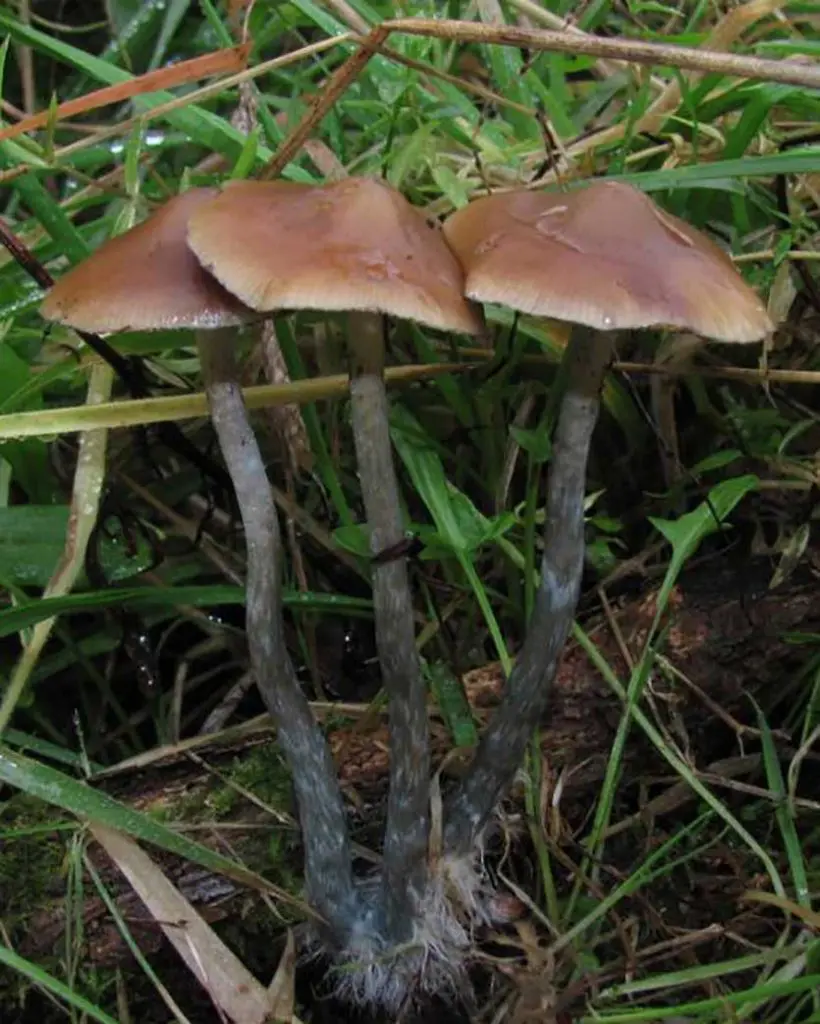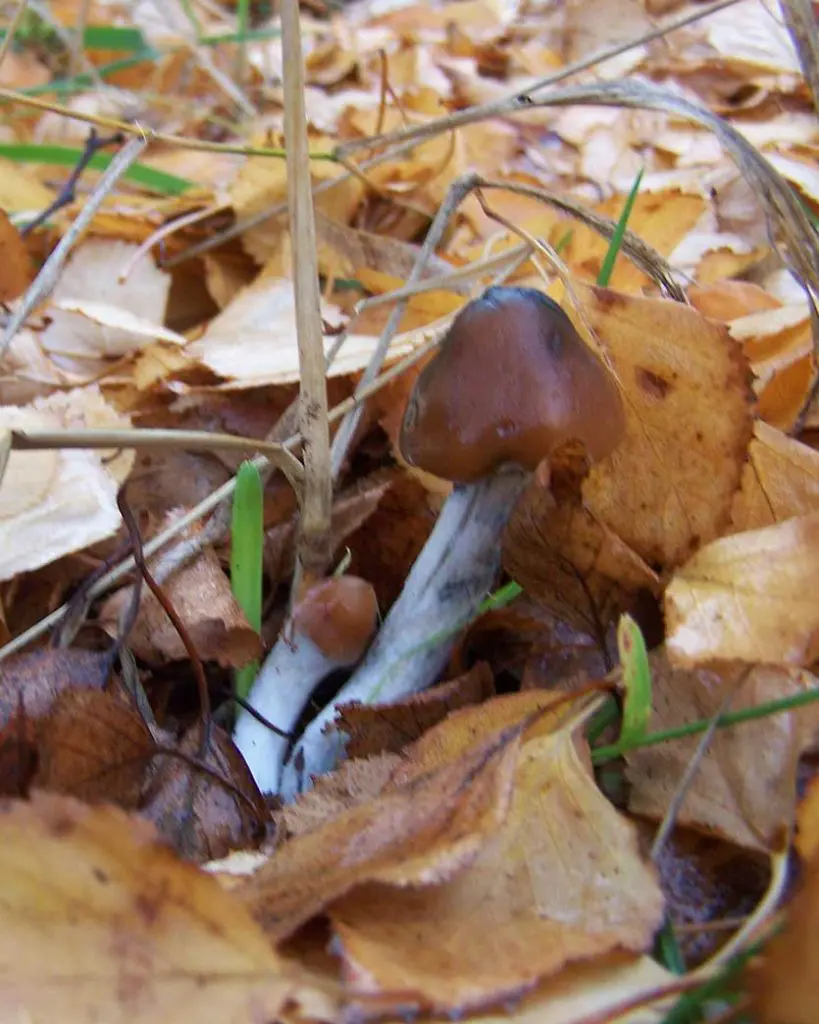The most well-known of the Genus Psilocybe is Psilocybe cubensis (Earle) Singer. a tropical/sub-tropical species which often grows in cow dung. Buy Top Quality Psilocybe Azurescens
They have a thick stem, a broad brown/yellow cap, and a skirt-like annulus. P. cubsensis are very easy to cultivate, and publicized most notably by Terrence McKenna. And his “5 grams in silent darkness”, something you probably wouldn’t want to do with Psilocybe azurescens!
Buy Top Quality Psilocybe Azurescens
This mushroom are often refer to by a variety of common names: Azzies, Astoriensis, Flying Saucers, Blue Runners, Blue Angels, or Indigo Psilocybe. With their caramel-colore caps, bright white stems, and broad umbo (the “nipple-like” structure in the center of the cap).Azurescens are quite distinctive in appearance, once you “get your eye in.” To the untrain eye, many Psilocybes can look like any other LBM’s (little brown mushrooms) hiding amongst the undergrowth. The general advice is to know the features of the species you are looking for. But also the ones you are not. Members of the genus Galerina, for example, can be deadly, and many other lookalikes can be poisonous.
Discovery of Psilocybe Azurescens: Strains in Oregon
As the story goes, they are first find In 1979 by a group of Boy Scouts, camping close to the mouth of the Columbia River in Oregon. Some commentators assume they are probably know before this time. Still with local foragers referring to them as Psilocybe astoriensis or Psilocybe cyanescens var. [variety] “astoria ossip.” In 1995, mycologist Paul Stamets and his colleague Jochen Gartz formally describe and name “Psilocybe azurescens”—after Stamets’ son Azureus. Who have in turn been name after “Azure,” the color that psilocybin mushrooms bruise when damage.
Best treatmemt for depression;
Azurescens grow naturally in a small part of the North American west coast, primarily Oregon, along the coastline near the Columbia River delta. Theyare find in Washington, California, and British Columbia, with online groups now spreading them further afield. Their small natural distribution has lead to a debate about whether they are an introduce species to the area. Stamets suggest that they may have been introduce from debris wash down the Columbia from the old-growth forests upriver.
Psilocybe Azurescen
In their natural habitat. Azurescens are known to favor the land adjacent to the shoreline amongst coastal dunes. Especially within clumps of the coastal grass Ammophila maritima, and lignicolous woody flotsam and jetsam wash downriver. They are find growing inland on deciduous wood chips and/or in sandy soils rich in ligneous debris. This mushroom grow in tight clusters (cespitose) or individually (gregarious). They develop an extensive and dense mycelial network. Their mycelium is very strong, holding on tightly to their myceliate (colonize) substrate (the material within which the “roots” of the fungi grow).
Their fruiting season begins in late September with the onset of colder weather. And continues until “late December and early January,” according to Stamets’ book Psilocybin Mushrooms Of The World. As temperate wood-loving Psilocybes, they can withstand cold temperatures of around -4 to 20° C (25 – 68° F).
What do Psilocybe Azurescens Look Like?
Azurescens are closely relate to Psilocybe cyanescens, Psilocybe allenii, the Australian species Psilocybe subaeruginosa, and New Zealand species Psilocybe weraroa. In appearance, they most closely resemble P. cyanescens and P. subaeruginosa.
Mushrooms are the reproductive part of the fungus. The underneath of the cap are the gills (lamellae), where the spores (akin to seeds) are form and eject into the air so they can be distribute by air currents. By placing the cap on a piece of foil or paper, gills down, a spore print can be create to aid in identification, or use for cultivation.
Taxonomically
Psilocybe azurescens are describe as having a dark caramel-colore cap (pileus) that is three to ten centimeters broad, conic to convex in shape, and flattening with age, with a persistent broad umbo (the nipple-like feature). The surface of the cap is smooth, with a viscous appearance when moist, feeling sticky to the touch, with a separable gelatinous pellicle that can be remove if the cap is broken carefully. The cap is hygrophanous: As it dries out it changes color, becoming a dirty brown or yellow.

The edge of the cap (the margin) is often even, striate (meaning the flesh is thin enough around the edge to see where the gills join the cap underneath). And sometimes with a pale blue or azure color. The azurescens cap do not turn upwards to form the sine-wave-shape margin that P. cyanescens is so well known for.
Psychonaut
The stem (officially call the stipe, when referring to mushrooms) can be nine centimeters to 20 centimeters long. By three millimeters to six millimeters thick. The stem is often white in appearance turning a dirty grey or brown with age. The stem is compose of thick, cartilaginous, fibrous mycelium-like tissue. The base of the stem thickens towards the ground and often have coarse white tufts of mycelium and white rhizomorphs.
Young specimens have a white partial veil resembling cobwebs covering the cap. This partial veil falls away as the cap expands, with the margin of the cap sometimes retaining a temporary white edge and an annular zone on the upper part of the stem that is often dust with purple-brown spores.
An important diagnostic feature of the genus Psilocybe is the blue bruising; all parts of Azurescens, including the gills, bruise strongly blue or indigo-black when damage.
Azurescens Spore Print
Learning how to take a spore print is also essential for the proper identification of different mushroom species. Different mushroom species feature distinct gill patterns and spore color. Foragers can use both characteristics to help determine the specific mushroom genus you’ve collect—information that can help prevent accidental mushroom poisoning. Apart from blue bruising, spore color can help identify psilocybe mushrooms. The color of most Psilocybe mushroom spore prints is dark purplish-brown to purplish-black. In contrast, psilocybe lookalikes may feature rust or cream-colore spore prints, qualities that indicate a potentially poisonous mushroom.
Read: How To Make a Spore Print
Azurescens vs. Cubensis: Psilocybe Azurescens Effects and Potency
Most people are likely to be more familiar with Psilocybe cubensis. The incredibly cosmopolitan species grown in cupboards and under beds all over the planet. In contrast to Psilocybe cubensis, Psilocybe azurescens are strong! Hold onto your hats, because they can be intense, highly visual, potentially hyperdimensional, and leave you wondering, “whoah…. What happen!”

P. cubensis contain psilocybin and psilocin at 0.14–0.42 percent and 0.37–1.30 percent, respectively. Whereas, P. azurescens contain approximately 1.78 percent psilocybin, 0.38 percent psilocin, and 0.35 percent baeocystin. According to Stamets and Gartz’ account. Azurescens contain significantly more psilocybin than psilocin (psilocybin being more stable. And deteriorating more slowly than psilocin) so that after a few months of storage in a cool dark environment. The mushrooms tend to retain most of their original potency.
Easy Outdoor Cultivation of Psilocybe Azurescens
Azurescens grow readily within mulche garden beds, since they like open shady areas, with reasonable moisture and deciduous trees. Known to grow near rhododendrons, rose bushes, and azaleas, they have also been find growing among blackberry and thickets of Scotch Broom.
This is not uncommon with the wood lovers, with P. cyanescens, and P. subaeruginosa also known to do well in urban environments.P. azurescens can be grown on a variety of plant or wood-derive substrates such as Alder chips (Alnus rubra) or other woody mulches. Cardboard or burlap can also be use. The same techniques use to grow mushrooms such as Stropharia rugosoannulata or Lepista nuda, as describe in Stamets’ book Mycelium Running, can be adapt to grow a variety of wood-inhabiting species. They can be started in small batches, then expand, and in time be use to set up garden beds.
Wood Lover Paralysis

Aeruginascin is very similar in structure to psilocybin, except it contains a third methyl group. One of the main theories is that if aeruginascin undergoes the same dephosphorylation. As in the conversion of psilocybin to psilocin, the resulting compound would be very similar to bufotenidine. A toad venom which is known to cause paralysis. Due to their chemical structure (both contain a third methyl group). Nither compound is able to cross the blood brain barrier and is probably confine to the peripheral circulation in body. Where they affect tissues containing the appropriate receptors.
This paralysis should not be confuse with the overwhelming effects of a strong dose. As it can occur at relatively low levels of psychedelic intensity. WLP is a distinct physiological effect. The effect is known to be temporary. Usually wearing off after 24 hours, but for the unprepare, it can be an anxiety-inducing experience.